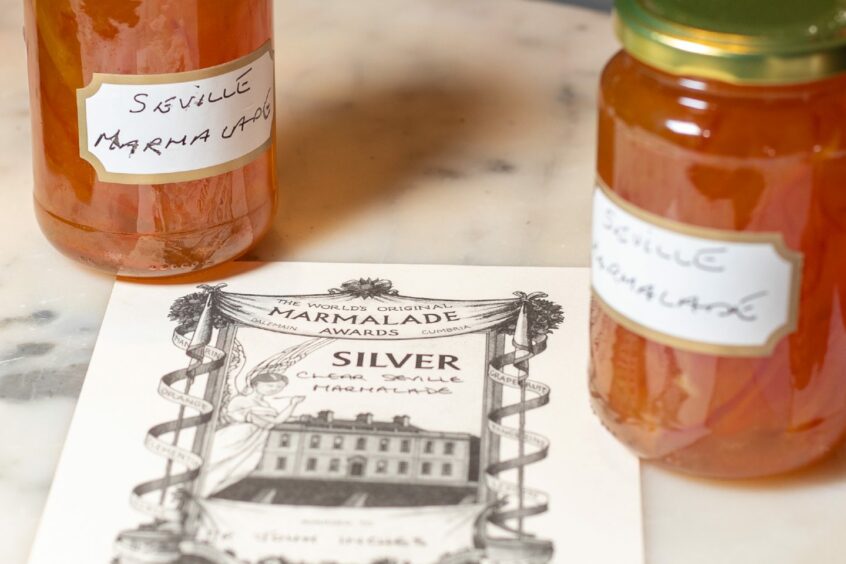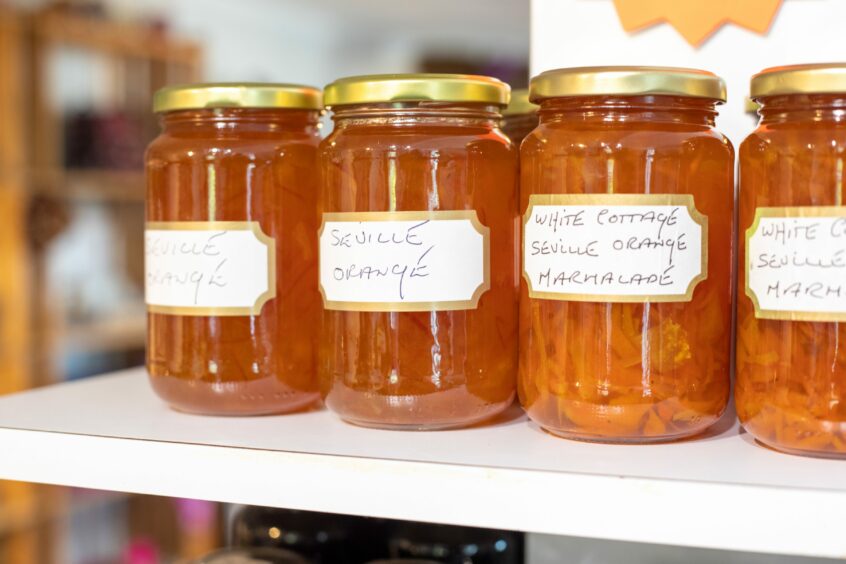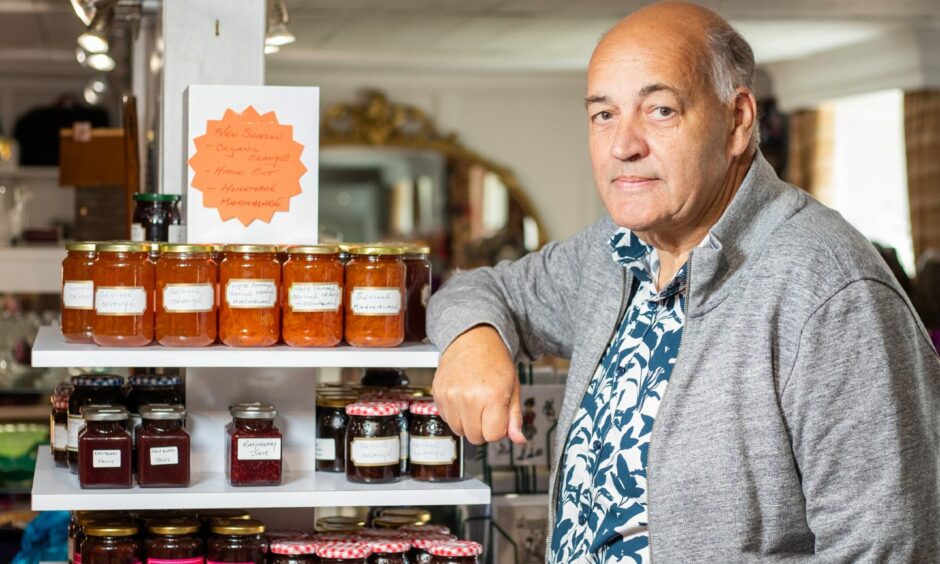An Aboyne marmalade maker has been awarded two silver medals at the world championships.
Former hotelier John Inches, 66, said his special win against 3,000 competitors was all down to his grandmother’s recipe he learned 56 years ago, at the age of 11.
Mr Inches, who owns kitchen and country shop The White Cottage in Aboyne, said the accolade not only brought him great joy but was also for his “dear granny” who died many years ago.
The World Marmalade Championships took place at the Dalemain Marmalade Festival in Penrith, Cumbria on the weekend of May 14. But Mr Inches only received notification of his win this week.
He said: “I have never entered a competition before, but I was encouraged to do so by my friend’s daughter-in-law when she tasted my marmalade.”
What makes the perfect marmalade?
Mr Inches describes himself as a “local lad”, who has lived and worked in the north-east for his whole career – at the Lairhillock Inn at Netherley, Maryculter House Hotel and Faradays in Cults.
He later became a lecturer in hotel management.
The judges presented the chef with his silver medals, firstly in the man-made category and in the Seville orange marmalade clear category. He said he was marked down a point for “too much peel” in his mix.
He said: “I make my marmalade once Christmas is over in January and February and I always use Seville oranges that I get from my fruitier.
“Making marmalade is a bit of a scutter, so people have stopped making it for themselves as they once did.
“I use my grandma’s recipe. It is clear with peel.”
Granny’s recipe not written down, but remembered in heart
Mr Inches’s grandmother Barbara Harrold, who was originally from Caithness, worked as a matron at a private hospital before she married.
She shared her recipe with him when he was 10 or 11, and while it is not written down, he remembers it by heart.
“When I started in my working life, I made it when I was serving breakfast to hotel guests,” Mr Inches said. “And I have made it to use as an ingredient in other recipes.
“I can only ever make it in January or February. I have made variations of it, and I do sometimes put lemons in. The lemons we get now are not as seeded as they have been – as the ladies don’t like those seeds in their gin. The seeds are good for natural pectin, a setting agent.
“I have made a three fruit marmalade with lemons, oranges and limes, which is an alternative if you only have ordinary domestic oranges.”
Asked if he enjoyed marmalade himself, the 66-year-old said: “I am a frustrated diabetic, but I still eat it once or twice a week on toast. Two things I am not really allowed – bread and marmalade, but I can not give it up.
“I love marmalade. It is very difficult when you are not allowed it.”
He also sells jars at The White Cottage, along with jams, chutneys, meals and ice creams.
However, with many people feeling the pinch at the moment, his creation has not sold out as quickly this year.

“There is still marmalade on the shelves this year,” he said. “Normally it sells out quite quickly but this year people have not been coming out and spending. Although it is picking up now.
“It is just wonderful that my grandma’s recipe has been so well received and the win is for her as much as it is for me.”
What is the award-winning recipe?
The recipe uses Seville oranges which can be bought in January or February. They are very sour and full of seeds.
The oranges must be peeled lightly only removing the orange skill with a potato peeler. It is important that none of the white pith is used.
The orange peel is then boiled in water until they are soft, then they are shredded finely.
The remains of the orange is then chopped up – seeds and all – and put in a pan and boil it up until it is soft and liquid has spilled out.
The contents of the pan are then strained through a jelly bag. For every one pint of juice, add one pound of granulated sugar.
Bring it to the boil and add the shredded peel.
Allow it to cool before sealing the jar and putting on a lid.


Conversation